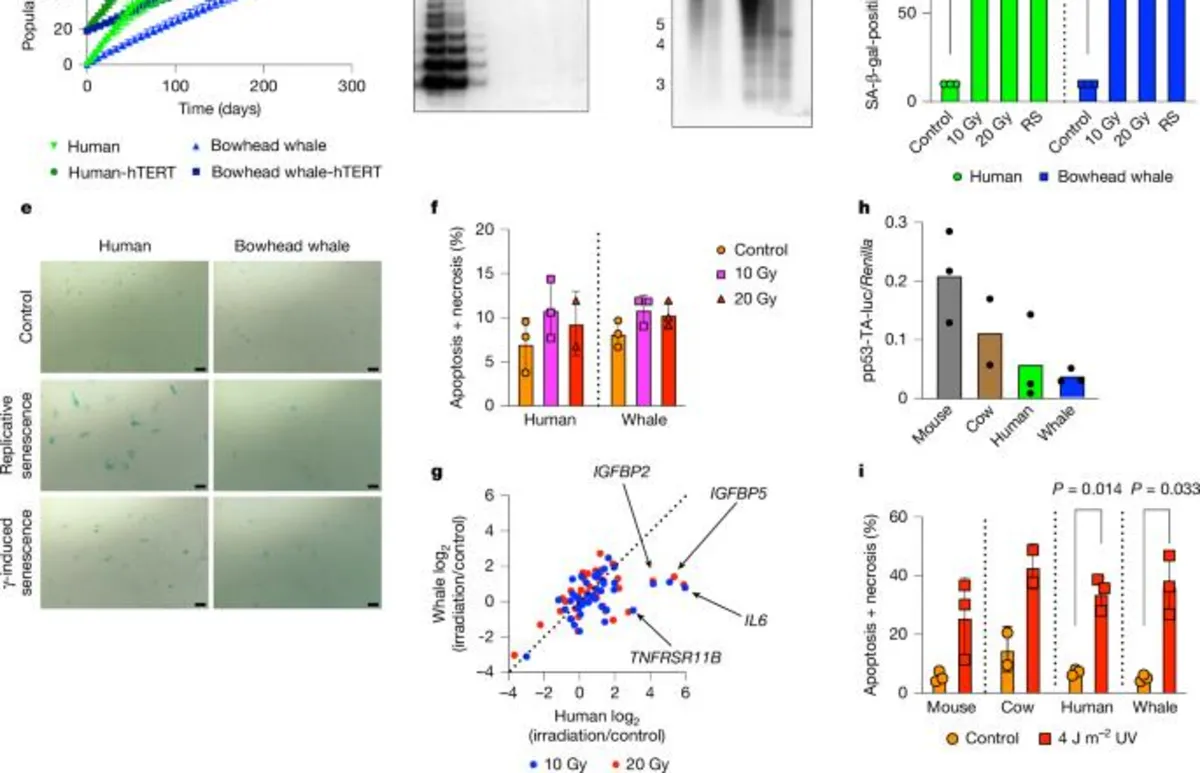
In-depth information regarding reagents, including essential components such as antibodies and sequences for primers, probes, CRISPR guides, and siRNAs, can be found in Supplementary Table 2. This resource serves as a vital reference for researchers seeking detailed data on the materials utilized in this study.
All animal experiments were conducted following approved protocols, adhering to the guidelines set forth by the University of Rochester Committee on Animal Resources (UCAR). This ensures ethical standards are maintained throughout the research process, prioritizing the welfare of the animals involved.
Samples from adult bowhead whales (Balaena mysticetus) were collected during the Iñupiaq subsistence harvests conducted in Barrow (Utqiaġvik), Alaska, in 2014 and 2018. This collection was performed in collaboration with the North Slope Borough Department of Wildlife Management and the Alaska Eskimo Whaling Commission, following a signed Memorandum of Understanding in September 2014 and March 2021.
Tissue samples were obtained immediately after the whales were brought ashore, with permission granted by the whaling captain. The explants were preserved in culture medium on ice or stored at 4 °C until processed and shipped to the University of Rochester for the isolation of primary fibroblasts from skin and lung tissue.
The transfer of bowhead whale samples from the North Slope Borough Department of Wildlife Management to the University of Rochester was conducted under the National Oceanic and Atmospheric Administration (NOAA)/National Marine Fisheries Service permit 21386, ensuring all regulatory requirements were met.
Multiple individuals from each species were utilized in the experiments, and specific details can be referenced in Supplementary Table 2. The primary skin fibroblasts were isolated from dermal tissues following previously established protocols.
To obtain primary skin fibroblasts, skin tissues were first shaved and disinfected using 70% ethanol. The tissues were minced with a scalpel and incubated in DMEM/F-12 medium (ThermoFisher) supplemented with Liberase (Sigma) at 37 °C for a duration between 15 and 90 minutes. After washing, tissues were plated in DMEM/F-12 medium containing 12% fetal bovine serum (GIBCO) and Antibiotic-Antimycotic (GIBCO).
For subsequent maintenance, fibroblast cultures from bowhead and other species were kept in EMEM (ATCC) supplemented with 12% fetal bovine serum (GIBCO), penicillin, and streptomycin at 37 °C with 5% CO2 and 3% O2. Notably, bowhead whale cells were cultured at a lower temperature of 33 °C, reflecting the species' physiological requirements.
Prior to initiating experiments with bowhead whale fibroblasts, optimal conditions for growth and viability were empirically determined, testing various factors including temperature, serum concentrations, and additives. Following isolation, low population doubling primary cultures were preserved in liquid nitrogen, and population doubling was meticulously tracked for future experiments.
For the soft agar assay, the fibroblast culture medium was prepared at a 2× concentration using 2× EMEM (Lonza). The bottom layer of agar plates was created by mixing the 2× medium with a sterile solution of 1.2% Noble Agar (Difco) at a 1:1 volumetric ratio. A total of 3 ml of the 1× medium/0.6% agar mixture was pipetted into each 6-cm cell culture dish and allowed to solidify at room temperature.
To plate the cells into the upper layer of soft agar, cells were washed, resuspended in 2× medium at a density of 20,000 cells per 1.5 ml, and diluted in 0.8% Noble Agar pre-equilibrated to 37 °C. This mixture was pipetted onto the solidified lower layer, and following solidification for 20–30 minutes, additional medium was added to submerge the agar layers.
Every three days, fresh medium was added, and after four weeks, viable colonies were stained overnight with nitro blue tetrazolium chloride (Thermo Fisher). Images of the colonies were captured using the ChemiDoc MP Imaging System (Bio-Rad), and colony quantification was performed using ImageJ software (NIH).
The mouse xenograft assay involved NIH-III nude mice (Crl:NIH-Lystbg-J Foxn1nuBtkxid) obtained from Charles River Laboratories. Seven-week-old female mice were utilized to establish xenografts, housed under specific pathogen-free conditions at the University of Rochester vivarium. The mice were kept on a 12-hour light/dark cycle, with temperature and humidity maintained within optimal ranges.
For each injection, 2 × 106 cells were resuspended in 100 μl of ice-cold 20% Matrigel (BD Bioscience) in PBS (Gibco). Anesthesia was induced using isoflurane gas, and the cell solution was injected subcutaneously into both flanks of each mouse using a 22-gauge needle. Tumor length and width were measured bi-weekly to monitor growth.
Mice were humanely euthanized upon reaching a predetermined tumor burden endpoint or at a maximum of 60 days post-injection. Tumors were excised, weighed, and preserved for further analysis, ensuring all procedures adhered to the guidelines set by the University of Rochester Committee for Animal Research.
This comprehensive overview highlights key methodologies and ethical considerations in conducting research involving bowhead whale samples and fibroblast cultures. The detailed protocols outlined here provide valuable insights for researchers engaged in similar studies, emphasizing the importance of compliance with ethical standards and the meticulous documentation of experimental procedures.